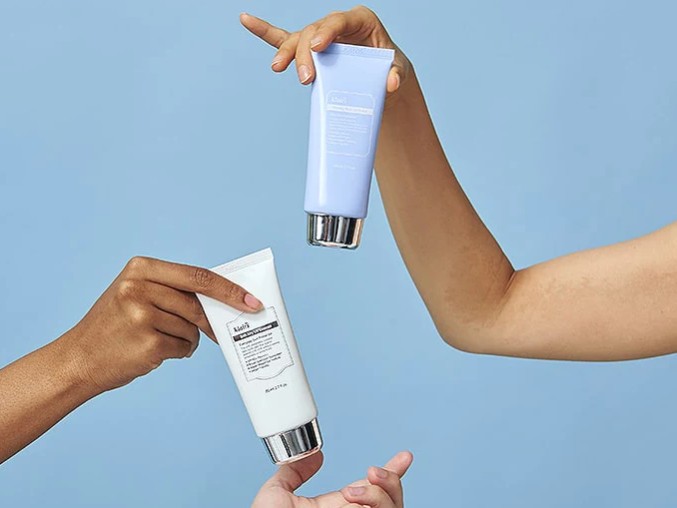Basking in the warmth of the sun is a delightful experience, but it comes with its own set of responsibilities. Protecting your skin from harmful ultraviolet (UV) rays is crucial for maintaining healthy skin. In this guide, we’ll delve into the basics of UV protection and why sunscreen is your skin’s best friend.

Understanding UV Rays
Before we jump into the sunscreen talk, let’s break down the types of UV rays from the sun. There are mainly two: UVA and UVB. Now, what they do to your skin is important to understand. UVA rays go deep into your skin and can make it age faster than it should. On the other hand, UVB rays are the ones responsible for sunburns and can even lead to skin cancer. The good news is that good sunscreens protect you from both these types of rays, giving your skin a solid defence.
SPF Demystified
When it comes to picking the right sunscreen, you’ve probably heard about SPF. But what does it mean? Well, SPF stands for Sun Protection Factor, and it’s like a superpower indicator for your sunscreen.
SPF mainly tells you how well your sunscreen can shield you from one particular kind of troublemaker – the UVB rays. These are the rays responsible for giving you sunburns and nudging you towards skin problems.
Now, let’s break down the numbers. Imagine your sunscreen has an SPF of 30. That means it can block about 97% of those pesky UVB rays. If you go a bit higher to SPF 50, you get a slightly better shield – around 98% protection. But here’s the catch – it’s not like doubling up the SPF gives you double the protection. Going from 30 to 50 only gives you a bit more, not a superhero leap.
Broad Spectrum Protection
Look for sunscreens labelled “broad-spectrum,” indicating protection against both UVA and UVB rays. This ensures comprehensive coverage, safeguarding your skin from ageing and potential damage.
Water Resistance Matters
Planning a day by the pool or a beach excursion? Opt for water-resistant sunscreens. Water-resistant formulations provide prolonged protection, even if you take a dip. However, it’s essential to reapply after swimming or sweating to maintain efficacy.
Application Techniques
Applying sunscreen is an art. Use a liberal amount, and don’t forget commonly overlooked areas like the ears, neck, and back of your hands. Reapply every two hours, or more frequently if swimming or sweating. Applying sunscreen under makeup is crucial for daily protection.
Choosing the Right Sunscreen for Your Skin Type
Different skin types have varying needs. If you have sensitive skin, opt for mineral sunscreens with zinc oxide or titanium dioxide. Those with oily skin might prefer gel-based or oil-free formulations, while individuals with dry skin may benefit from creams or lotions with added moisturizing agents.
The Myth of “Base Tan”
Some believe that getting a “base tan” protects against sunburn. This is a dangerous misconception. A tan is a sign of skin damage, and the protection it provides is minimal. Embrace the sunscreen instead of relying on a base tan.
Sunscreen and Skin Cancer Prevention
Skin cancer is a real threat, and sunscreen is a powerful ally in its prevention. Regular use of sunscreen, combined with other sun-safe practices like seeking shade and wearing protective clothing, significantly reduces the risk of skin cancer.
Conclusion
In the realm of skincare, sunscreen reigns supreme. Understanding the basics of UV protection empowers you to make informed choices for your skin’s health. Embrace sunscreen as a daily ritual, and let it be your shield against the sun’s powerful rays. Your skin will thank you for it in the years to come. Stay protected, stay radiant!
